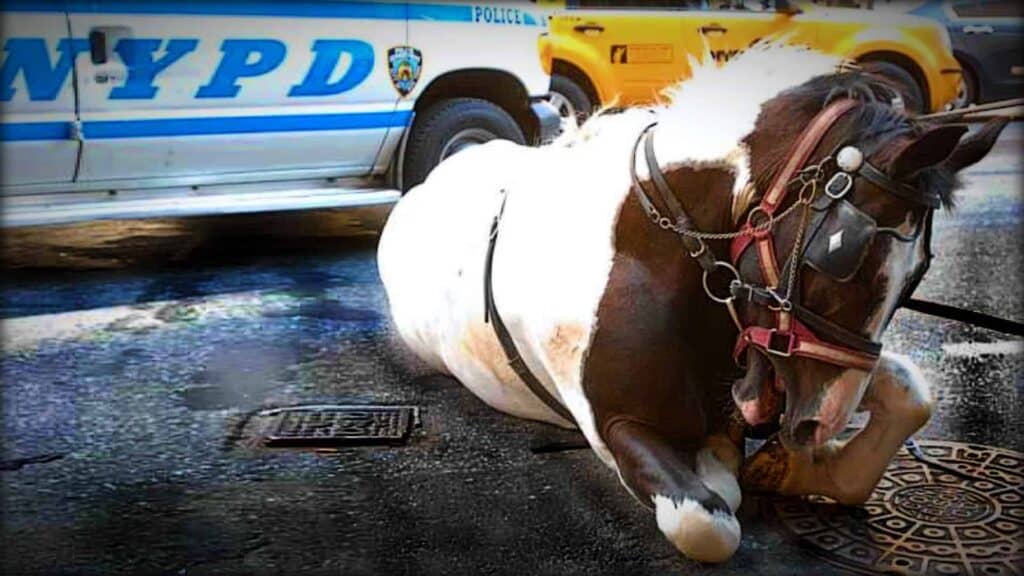For centuries, the practice of riding animals, particularly horses, has been deeply embedded in numerous cultures worldwide. From the thrill of competition in equestrian sports to leisurely trail rides through picturesque landscapes, the allure of horse riding is ubiquitous. However, beneath this veneer of enjoyment lies an unsettling reality that warrants closer examination. The traditional view of riding animals as mere companions or sporting partners may be profoundly flawed. This perspective beckons the question: is it time to rethink the convention that has shaped our relationship with these sentient beings?
At the heart of this discussion is the concept of animal sentience—the capacity of animals to experience feelings such as pain, fear, and distress. Scientific research increasingly supports the notion that non-human animals possess sophisticated emotional experiences and acute awareness of their surroundings. This recognition challenges the notion that riding animals is harmless entertainment, as it imposes human interests and desires upon creatures capable of suffering. Analyzing the implications of this relationship is crucial to understanding the potential cruelty involved in riding.
To ascertain whether riding animals constitutes animal cruelty, one must first consider the physical and psychological burdens imposed on these creatures. Horses, for example, are prey animals with inherent instincts that prioritize self-preservation. They rely on their flight response to escape perceived threats. When ridden, horses are subjected to a paradigm that contradicts their natural inclinations. The act of confining a horse within a controlled environment, often through the use of bits and saddles, compromises their autonomy. This loss of agency can lead to a myriad of behavioral issues, including anxiety, aggression, and even depression.
Moreover, the physical ramifications of riding cannot be overlooked. Bits, used to control a horse’s direction and speed, can cause discomfort and pain. The pressure exerted on sensitive areas of the horse’s mouth may lead to long-term dental issues or damage to the soft tissue. Various studies indicate that the constant application of pressure can elicit a fight-or-flight response, further aggravating the animal’s stress levels. While proponents may argue that proper training alleviates these concerns, acceptable training methods do not negate the inherent risks associated with riding.
The ethical implications surrounding the use of animals for riding purposes also demand critical contemplation. Cultural traditions, often steeped in nostalgia and heritage, often elicit an emotional response that can overshadow the moral dilemmas inherent in these practices. The argument that riding strengthens the bond between horse and human is frequently posited. Yet, this purported bond may be illusory, as it is often built upon a foundation of coercion rather than mutual respect. If a relationship reflects a power imbalance, it becomes increasingly challenging to defend the use of animals as mere commodities for human amusement.
Furthermore, the existence of alternative practices calls into question the necessity of riding. Modern advancements in animal companionship and entertainment have introduced various ways to engage with animals that do not necessitate riding. From interactive ground work to advanced training in liberty work or precision sports, horse enthusiasts can cultivate meaningful connections without imposing the burdens of riding. These gentler methodologies allow for the exploration of equine intelligence and emotional depth while honoring the horse’s inherent autonomy.
As society evolves, so too does the understanding of animal welfare. The burgeoning movement toward veganism, encompassing all aspects of animal exploitation, reflects a growing recognition of the rights of non-human species. Advocates for animal rights are increasingly vocal, urging a reexamination of traditional practices that may contribute to cruelty, enslavement, and suffering. This shift in perspective extends not only to horse riding but to the very fabric of human-animal relationships. As individuals become more aware of the ethical implications surrounding animal use, they may choose to engage with animals in a way that promotes intrinsic well-being and autonomy.
It is imperative for both enthusiasts and casual riders to engage in this dialogue. Dismissing the concerns associated with riding as mere sensationalism undermines the profound consequences of perpetuating outdated practices. The advent of social media has democratized discussions surrounding animal welfare, facilitating a platform for critical discourse. Engaging in open dialogue fosters awareness, and can catalyze much-needed changes in societal attitudes towards riding.
In conclusion, to view riding animals solely through the lens of tradition is to narrow the conversation to its detriment. As stewards of the planet, it is incumbent upon individuals to scrutinize the systems that govern their relationships with non-human animals. Recognizing the potential for cruelty entwined within riding underscores the urgency for a paradigm shift. By rethinking our bonds with equine companions, we can aspire to foster relationships that are grounded in mutual respect and compassion. The time has come to disentangle ourselves from the shackles of tradition and embrace a more humane approach toward our connections with animals. In the end, animals are not here for our amusement; they are beings deserving of dignity and respect.










